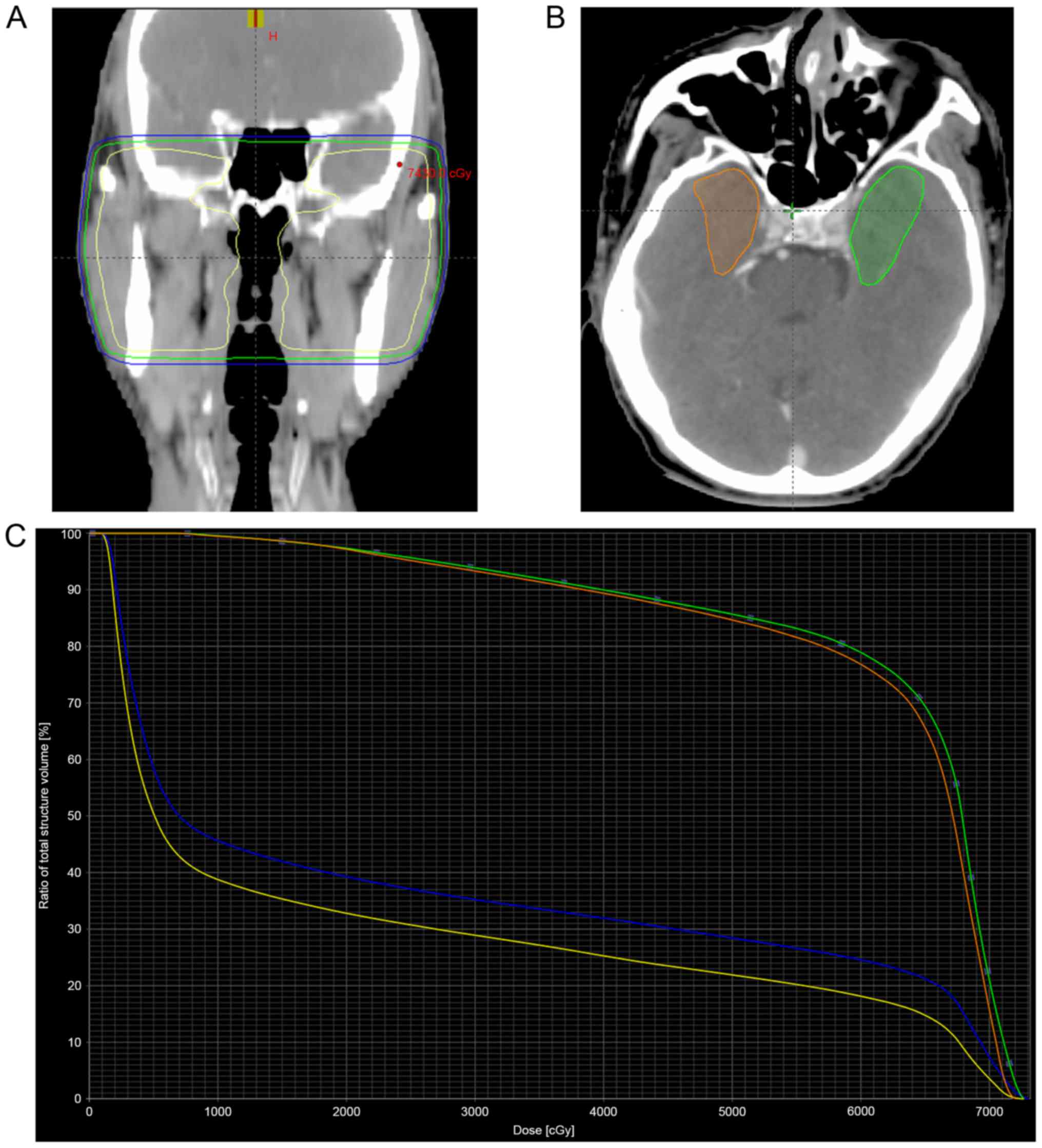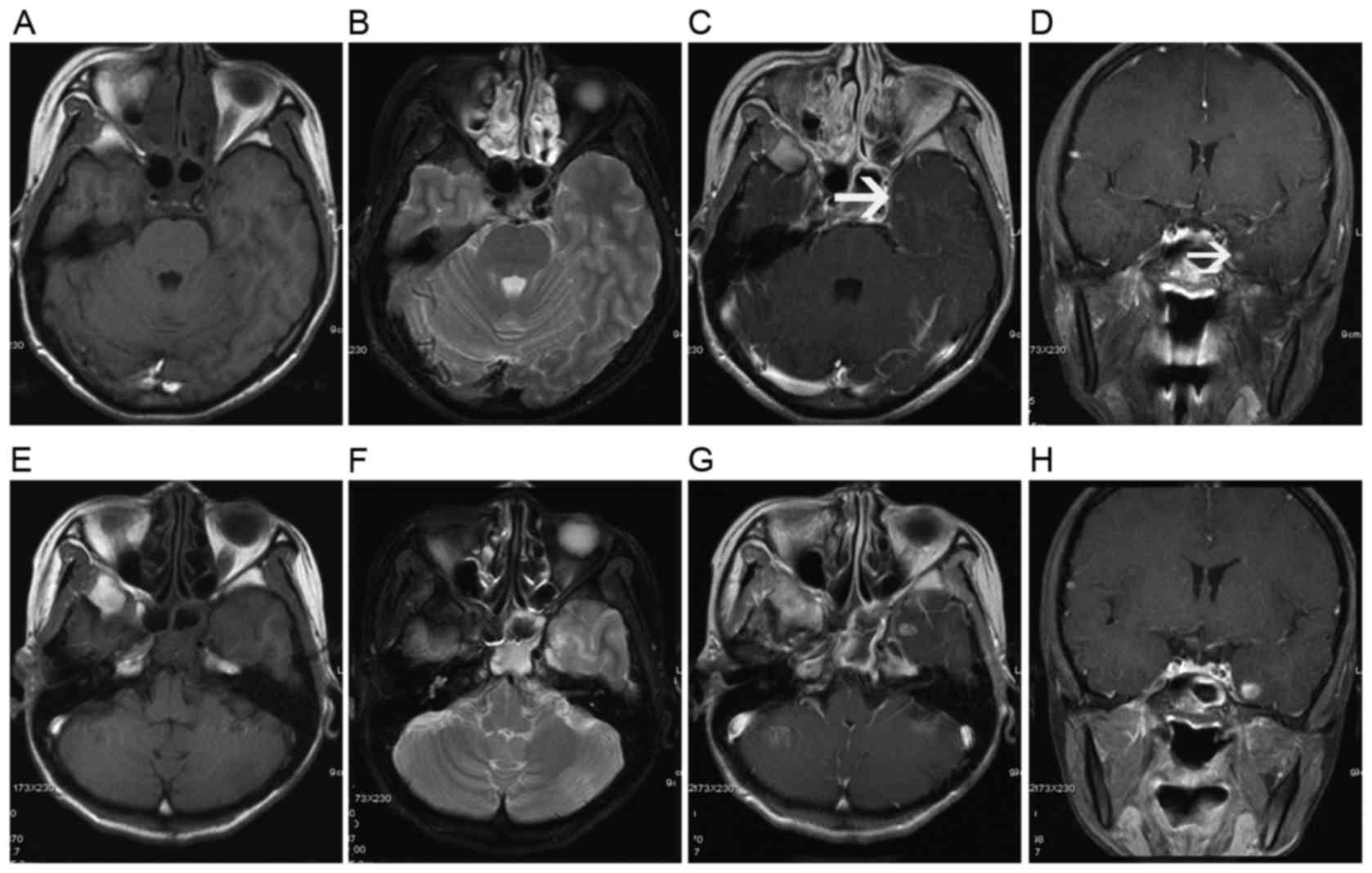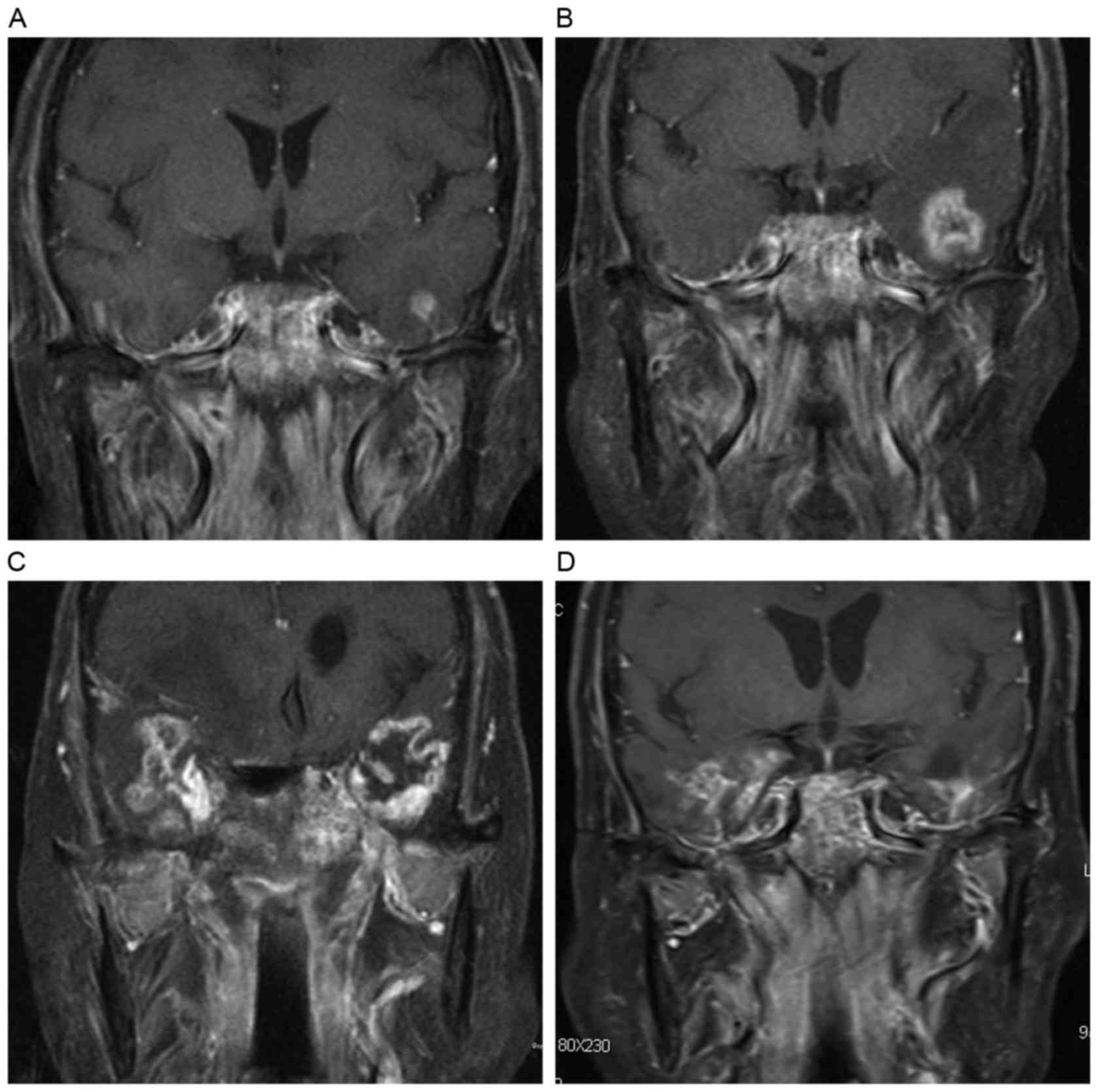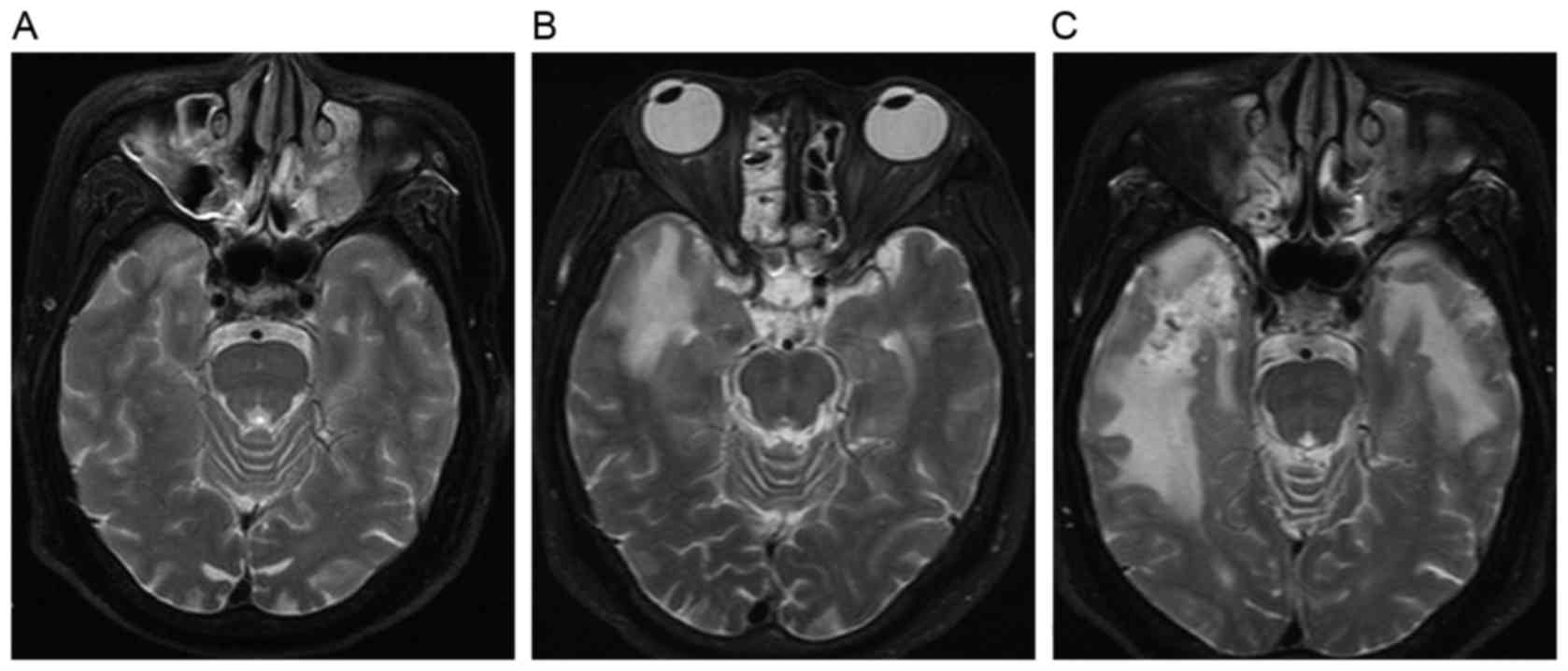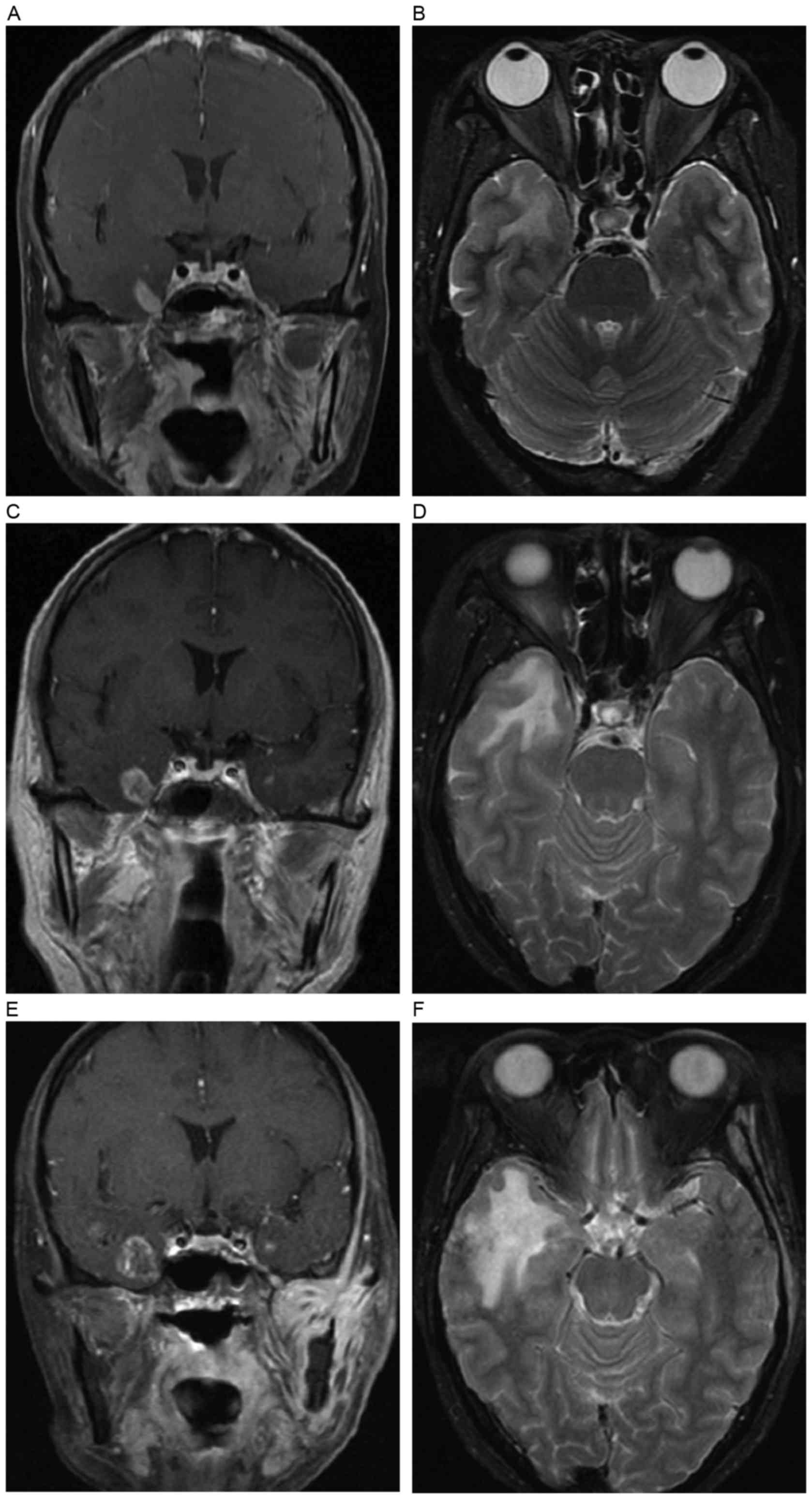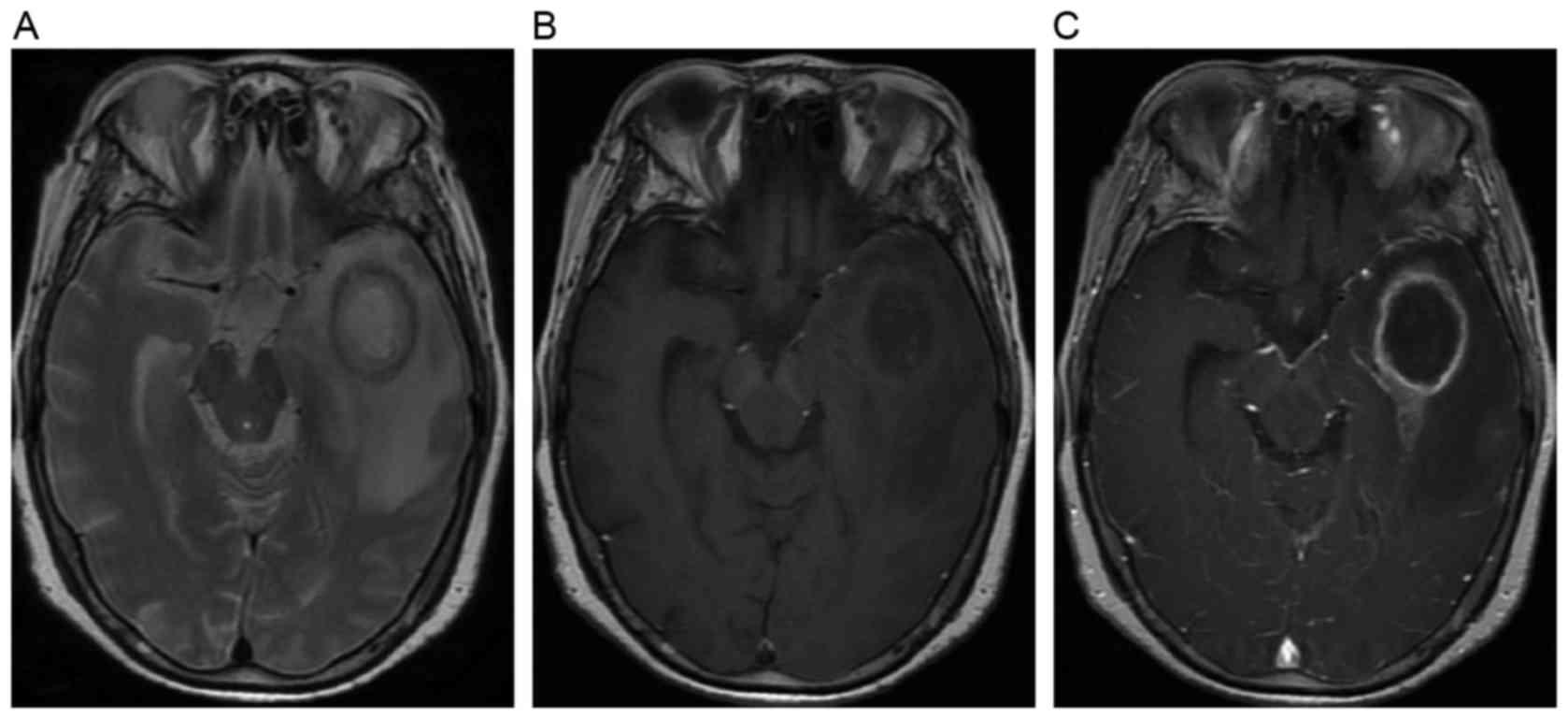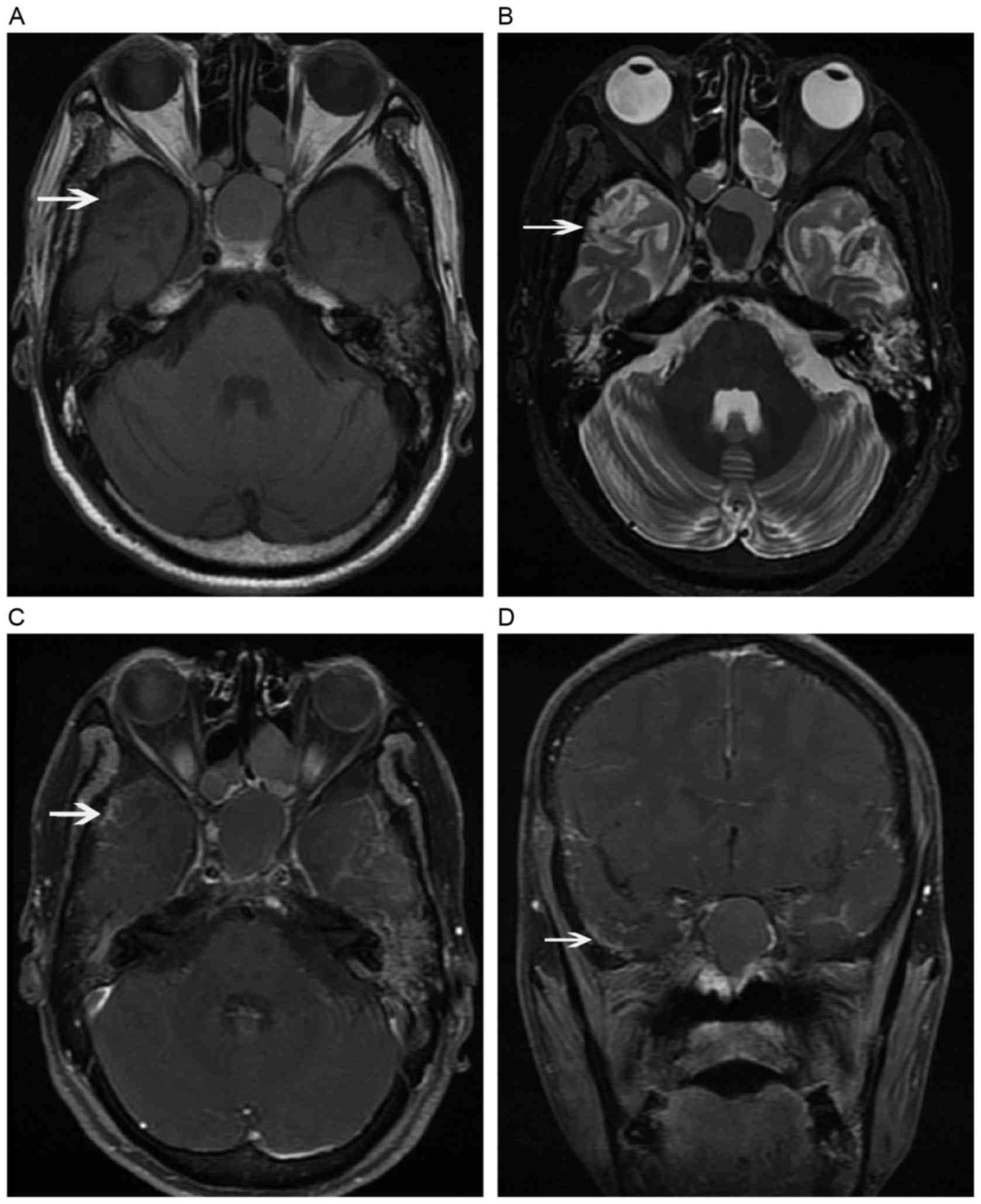Dynamic MRI follow-up of radiation encephalopathy in the temporal lobe following nasopharyngeal carcinoma radiotherapy
- Authors:
- Published online on: May 17, 2017 https://doi.org/10.3892/ol.2017.6199
- Pages: 715-724
-
Copyright: © Zhou et al. This is an open access article distributed under the terms of Creative Commons Attribution License.
Metrics: Total
Views: 0 (Spandidos Publications: | PMC Statistics: )
Total PDF Downloads: 0 (Spandidos Publications: | PMC Statistics: )
Abstract
The natural course of radiation encephalopathy following nasopharyngeal carcinoma (NPC) radiotherapy remains poorly understood. The present study aimed to investigate the magnetic resonance imaging (MRI) characteristics and evolution of radiation encephalopathy. A series of 162 follow‑up MRI examinations from 68 NPC patients with radiation encephalopathy in the temporal lobes were analyzed retrospectively. Each component of radiation encephalopathy was defined as follows: i) contrast enhanced lesions were enhanced lesions on contrast enhanced T1‑weighted images (T1WI); ii) white matter lesions were lesions of homogeneous hyperintensity on T2‑weighted images (T2WI) and hypointensity on T1WI; iii) cysts were round or oval well‑defined lesions of hyperintensity on T2WI; iv) hemosiderin deposition were nodular or annular hypointense lesions with lower hypointense than normal white matter on both T1WI and T2WI; v) gray matter lesions were defined as disruption or erosion of hyperintensity in the cortex on T2WI. Contrast enhanced lesions, white matter lesions, gray matter lesions, cysts and hemosiderin deposition were detected in 105 (100.0%), 98 (93.3%), 94 (89.5%), 2 (1.7%) and 2 (1.7%) cases of the 105 initial diagnosed temporal lobe lesions. Contrast enhanced lesions were the most commonly observed, followed by white matter lesions, gray matter lesions, temporal lobe atrophy, cysts and hemosiderin deposition. In addition, 12 new lesions were identified during the follow‑up, 4 of which presented as solid enhanced nodular lesions. Importantly, in 11 of the 117 (9.4%) affected temporal lobes, solid enhanced nodular lesions were observed to be the only initial abnormalities to occur. For those enhanced nodular lesions measuring <0.8 cm, no necrosis could be detected. On the contrary, all the contrast enhanced lesions measuring >2.0 cm exhibited a necrotic core. To the best of our knowledge, the present study revealed for the first time solid enhanced nodular lesions as the earliest MRI abnormalities of radiation encephalopathy following NPC radiotherapy.



